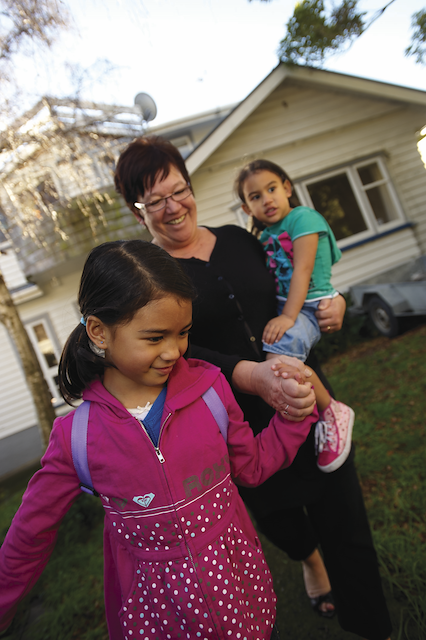Whānau have a key role in revitalising te reo Māori in our homes and communities.
Published: Thursday, 6 August 2015 | Rāpare, 06 Hereturikōkā, 2015

Whānau have a key role in revitalising Te Reo Māori in our homes and communities. Our whānau sit at the centre of language transfer to our tamariki. While many successes have been achieved in kōhanga and kura, these institutions can’t replace the benefits of speaking Māori in the home and among whānau. For example, in any year, children are at kōhanga and kura for about 25% of their waking time; for the other 75% they are with their whānau.
The process of handing down the language to the next generation is vital for the future health of the Māori language. Parents and whānau that speak Māori to their children help te reo Māori become part of everyday life.

For many people however, establishing Māori as the language for your whānau may require considerable time, energy, support and commitment. Learning Māori, like any language, takes several years.
The following tips provide suggestions to overcome the many barriers you could face as a Māori language learner and advocate in your home.
TIPS
Speak te reo Māori with your children
1) Practice in the safety of your home with your whānau and friends. Once you feel comfortable with the phrases and words, you can try them out when you are in public.
2) Record Māori programmes from television. This is particularly good with pre-schoolers who are at home during the day. Maximise the benefits and ask each other questions in Te Reo Māori about what’s happening in the programme.
3) Participate in Māori cultural activities, such as waka ama, kapa haka and mau taiaha as much as possible. Participation will increase the number of places where you can speak Te Reo Māori.
4) Create resources unique to your child and their identity. Ask your child to draw a picture of their maunga and awa. They will see themselves reflected in the resource and it will be special to them.
5) Expose your tamariki to different environments where together you can engage in Te Reo Māori. This can be in the car, at mealtimes or in the supermarket, your tamariki will learn that te reo Māori is an important part of life and can be used everywhere.
Whānau to support parents
1) Your whānau do not need to be fluent speakers to teach your tamariki Te Reo Māori. Encourage your whānau to use any kupu and phrases your whānau may know with your tamariki. Every contribution your whānau can make will help your tamariki.
2) Every time your whānau speak Māori to your tamariki, they are teaching them two things: first they are teaching your tamariki Te Reo Māori; and second they are also teaching your tamariki that Te Reo Māori is an important part of home life.
3) Be aware of the important role that whānau plays in keeping the Māori language alive and healthy.
4) Talk to your whānau about the importance of speaking te Reo Māori in the home and how you are going to increase your use of the Māori language. Talk about a language plan for you and your whānau in which everyone can participate (through either speaking Māori or supporting others who speak it).
5) One of the ways children learn is through repetition, so use the same phrases in Te Reo Māori with them on a daily basis. This will help you to learn too.
This information has been sourced from the Te Puni Kōkiri booklet ‘Kei Roto i te Whare’ – Māori language in the home. This booklet is designed to help you with decisions about learning and speaking te reo Māori within your household.
Order FREE copies of ‘Kei Roto i te Whare’ at tpkinfo@tpk.govt.nz.
Download:
- Kei roto - Tips for Parents in Māori [PDF, 647KB]
- Kei roto - Tips for Parents in English [PDF, 647KB]